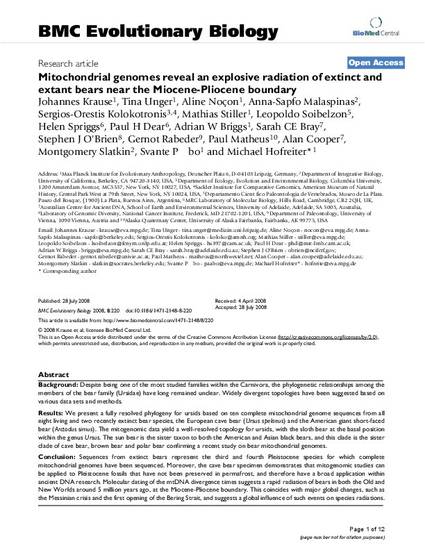
Background: Despite being one of the most studied families within the Carnivora, the phylogenetic relationships among the members of the bear family (Ursidae) have long remained unclear. Widely divergent topologies have been suggested based on various data sets and methods.
Results: We present a fully resolved phylogeny for ursids based on ten complete mitochondrial genome sequences from all eight living and two recently extinct bear species, the European cave bear (Ursus spelaeus) and the American giant short-faced bear (Arctodus simus). The mitogenomic data yield a well-resolved topology for ursids, with the sloth bear at the basal position within the genus Ursus. The sun bear is the sister taxon to both the American and Asian black bears, and this clade is the sister clade of cave bear, brown bear and polar bear confirming a recent study on bear mitochondrial genomes.
Conclusion: Sequences from extinct bears represent the third and fourth Pleistocene species for which complete mitochondrial genomes have been sequenced. Moreover, the cave bear specimen demonstrates that mitogenomic studies can be applied to Pleistocene fossils that have not been preserved in permafrost, and therefore have a broad application within ancient DNA research. Molecular dating of the mtDNA divergence times suggests a rapid radiation of bears in both the Old and New Worlds around 5 million years ago, at the Miocene-Pliocene boundary. This coincides with major global changes, such as the Messinian crisis and the first opening of the Bering Strait, and suggests a global influence of such events on species radiations.
Available at: http://works.bepress.com/stephen-obrien/418/

©Krause et al. 2008; licensee BioMed Central Ltd. This is an Open Access article distributed under the terms of the Creative Commons Attribution License (http://creativecommons.org/licenses/by/2.0), which permits unrestricted use, distribution, and reproduction in any medium, provided the original work is properly cited.